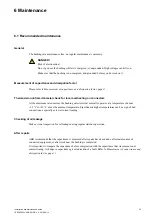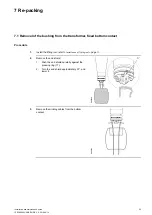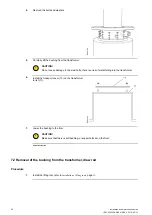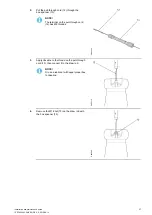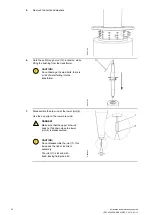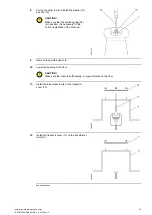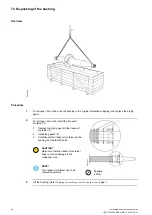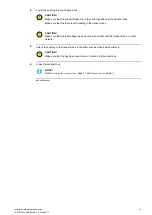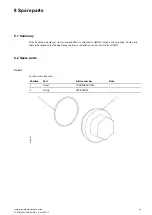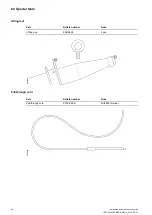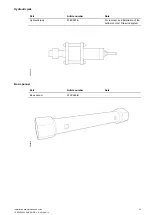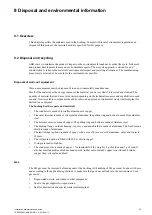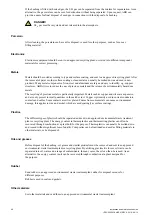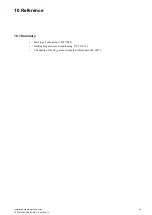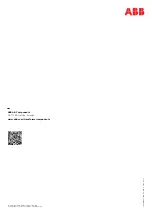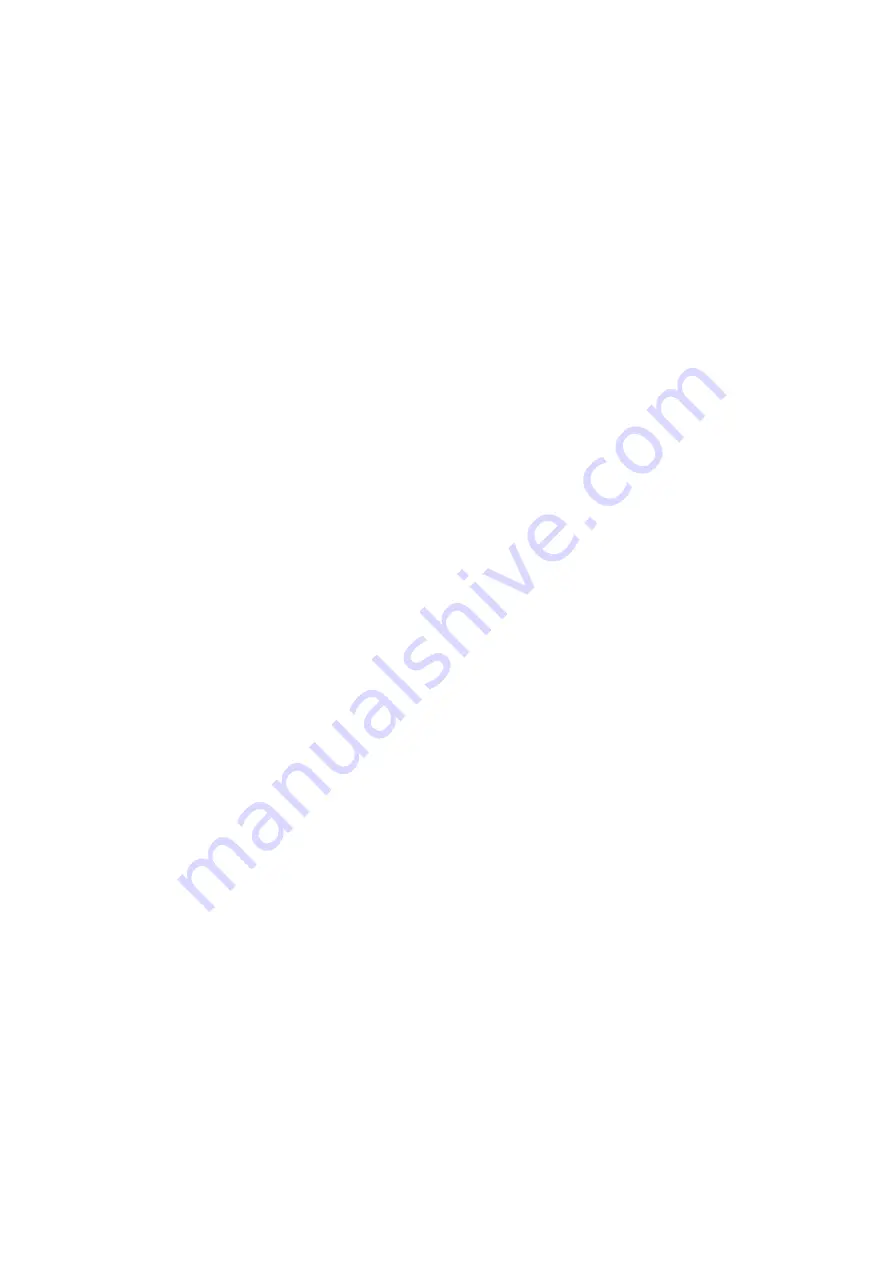
Installation and maintenance guide
1ZSC000563-AAB EN, REV. 6, 2019-09-12
67
9 Disposal and environmental information
9.1 Overview
This chapter specifies the materials used in the bushing. Comply with local environmental regulations on
disposal of this product, the materials used are specified for this purpose.
9.2 Disposal and recycling
ABB strives to minimize the product's impact on the environment throughout its entire life cycle. Technical
and product development focuses on environmental aspects. The ecocycle approach is striven for, and
consideration is taken to the materials' environmental impact and recycling alternatives. The manufacturing
processes are selected to be as safe for the environment as possible.
Disposal of worn-out equipment
Worn-out equipment must be disposed of in an environmentally sound manner.
Much of the material, or the energy content in the material, can be recycled if it is sorted and cleaned. The
quantity of material that can be recycled varies depending on the technical resources and capabilities in each
country. Non-recyclable components should be sent to an approved environmental waste treatment plant for
destruction or disposal.
The bushing has these parts and materials
•
The conductor is made of low-alloy aluminum or copper.
•
The outer terminal is made of silver plated aluminum, the pulling ring and bolts are made from stainless
steel.
•
The bottom contact is made of copper. The pulling ring and bolts are made of stainless steel.
•
The bushing flange, outdoor housing, tap cover, and end-shield are made of aluminum. The fixed corona
shield is made of aluminum.
•
The test/voltage tap body is made of epoxy with a core of brass, cover of aluminum, cable and contacts
of brass.
•
The voltage tap option is filled with 200 cc of silicone gel.
•
O-rings are made of rubber.
•
The condenser core is made of paper, 1 % aluminum foil (by weight), 2 g of carbon and 1 g of lead. It
also has small quantities of rubber bonded cork, rubber seals, braided copper wire (tinned), braided
copper strap, silver glue and lead.
Gas
The SF
6
gas must be removed before disposal of the bushing. All handling of SF
6
gas must be done with care
and according to the applicable regulations, to make sure that gas does not leak into the environment. Used
gas can be:
•
Regenerated on-site, and reused in other equipment.
•
Sent to the gas supplier for regeneration.
•
Sent for destruction at a special waste treatment plant.
Summary of Contents for GSBK 170
Page 46: ...46 Installation and maintenance guide 1ZSC000563 AAB EN REV 6 2019 09 12 ...
Page 52: ...52 Installation and maintenance guide 1ZSC000563 AAB EN REV 6 2019 09 12 ...
Page 54: ...54 Installation and maintenance guide 1ZSC000563 AAB EN REV 6 2019 09 12 ...
Page 62: ...62 Installation and maintenance guide 1ZSC000563 AAB EN REV 6 2019 09 12 ...
Page 66: ...66 Installation and maintenance guide 1ZSC000563 AAB EN REV 6 2019 09 12 ...
Page 70: ......
Page 71: ......

